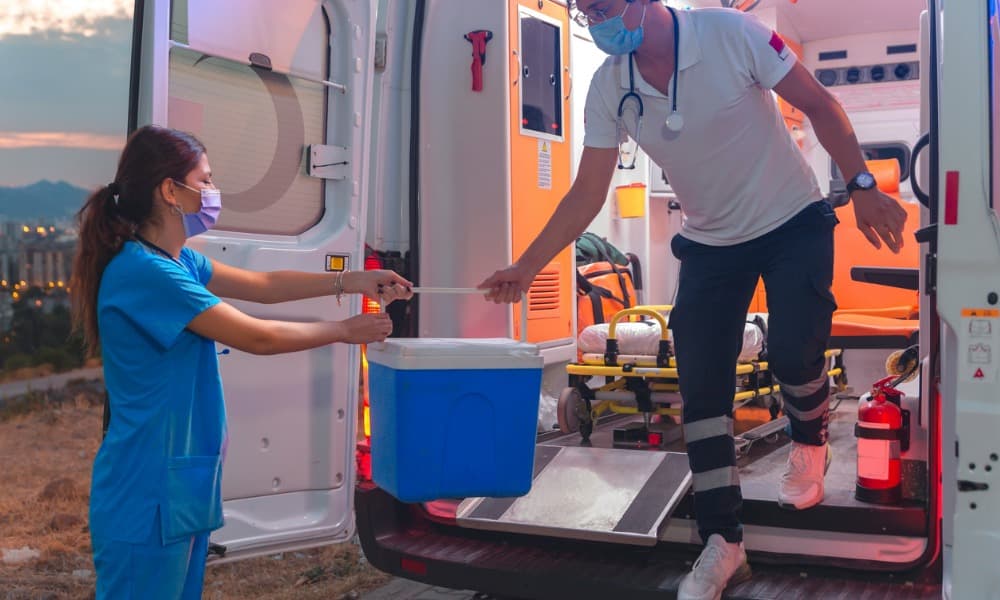It’s hard to believe it’s been 50 years since the first human heart transplant. With such an incredible history behind this life-saving procedure, now is a great time to look back on its history and how it became a standard procedure for patients in need. Like many medical procedures, heart transplants started as very experimental, and subsequent years became more clinical. This article will delve into a brief overview of the history of this fascinating procedure.
The First Heart Transplant
In 1905, Charles Guthrie and Alexis Carrel performed the first procedure of its kind at the University of Chicago. But this first heart transplant wasn’t performed on a human – their first heart transplant patient was a dog!
Because of the groundbreaking nature of their work, it’s fascinating to read their account of the procedure. Here’s how Carrel and Guthrie described the procedure in their own words:
“The heart of a small dog was extirpated and transplanted into the neck of a larger one by anastomosing the cut ends of the jugular vein and the carotid artery to the aorta, the pulmonary artery, one of the venae cavae, and a pulmonary vein. The circulation was reestablished through the heart, about an hour and 15 minutes after the cessation of the beat; 20 minutes after the reestablishment of the circulation, the blood was actively circulating through the coronary system. A small opening being made through the wall of a small branch of the coronary vein, an abundant dark hemorrhage was produced. Then strong fibrillar contractions were seen.
“Afterward, contractions appeared and about an hour after the operation, effective contractions of the ventricles began. The transplanted heart beat at the rate of 88 per minute, while the rate of the normal heart was 100 per minute. A little later tracing was taken. Owing to the fact that the operation was made without aseptic technique, coagulation occurred in the cavities of the heart after about two hours, and the experiment was interrupted.”
Since the dog only lived about two hours after the procedure, it was clear that more work needed to be done.
More experiments through the 1960s
In this experimental phase, more dogs were used to help refine this new heart transplant procedure. Heart transplants in dogs made up most of these procedures through the 1960s. While the actual surgical techniques were refined, the various operations saw similar results. Most of the dogs only lived for a few hours, although some lived for a few days.
In 1964, a large chimpanzee’s heart was transplanted into a human. Though this procedure was not successful, it did pave the way for the first human-to-human heart transplant, which occurred in 1967.
The first successful human heart transplant
Dr. Norman Shumway from Stanford University conducted copious amounts of research and developed techniques for a human heart transplant. In 1967, a South African doctor performed the actual procedure using Dr. Shumway’s research. This doctor, Christian Barnard, performed the procedure on 54-year-old Louis Washkansky.
Barnard performed the procedure despite a great deal of uncertainty involving transplant operations. Unfortunately, the patient only lived another month, succumbing to pneumonia. Despite this setback, the medical team counted the procedure as a success.
Barnard refused to let the setback defeat him. Less than a month later, he performed a second heart transplant. This time, the patient, Philip Blaiberg, lived for 593 days. Despite the longer survival period, there were considerable doubts over Blaiberg’s quality of life.
Shumway’s research continued to pave the way for future procedures. In 1968, Stanford was host to the fourth-ever human-to-human heart transplant. This early success pushed Stanford to continue refining its procedures. Despite other institutions closing their heart transplant programs leading in the 1970s and beyond, Stanford soldiered on.
Better Storage Techniques Improved Success Rates

One of the biggest challenges to overcome was speed. Researchers determined that part of the reason for failure in the early procedures was that the heart was out of the body, not functioning, for too long. Better storage techniques and a tighter window helped pave the way for more successful transplants.
Stanford researchers overcame this obstacle with the discovery that a “chilled, high-potassium electrolyte solution” could preserve the organs longer, giving medical teams more time to transport the heart to where the patient was waiting.
Preventing Heart Rejections
Another big problem doctors faced involved the rejection of the new heart by the host body. Fortunately, two procedures developed in the 70s and 80s helped curtail this problem.
Two Stanford doctors, Dr. Philip Caves and Dr. Margaret Billingham, designed a procedure to test the patient for signs of rejection. Their innovation was an instrument that could be inserted into the patient’s neck vein. From there, the instrument reached the heart and withdrew tissue samples. These samples would be analyzed in a lab to look for signs of rejection.
Early heart transplant pioneer Dr. Shumway then developed a new drug that was administered after the heart transplant. This cyclosporine drug helped reduce the likelihood of the body rejecting the new heart.
The first pediatric heart transplant

Dr. Eric Rose performed the world’s first pediatric heart transplant in Columbia, New York, in 1984. The patient was four-year-old James Lovette, who had only one ventricle. The procedure, while successful, resulted in a difficult life for Lovette. He struggled with a bout of Hodgkin’s disease and other various health challenges. He also underwent a second heart transplant in 1989.
Lovette went on graduate from college and enrolled in medical school. While he died at an early age, just one week into his medical school classes, his success was a milestone in heart transplants.
Increased survival rate
While rejection issues were not completely solved, the survival rate of heart transplant patients continued to grow. In 1985, Dr. Shumway issued findings showing that patients surviving a year or longer were up to 80%. Further, out of these one-year-plus survivors, 80% of them were expected to make a “full rehabilitation.”
Because of the ongoing work of pioneers like Dr. Shumway, Dr. Barnard, and others, heart transplant procedures found their way back into the medical community at large, where they remain today. This brief history shows what is possible when innovators refuse to let setbacks stop them.
Like this article? Have something to add? Let us know in the comments below.